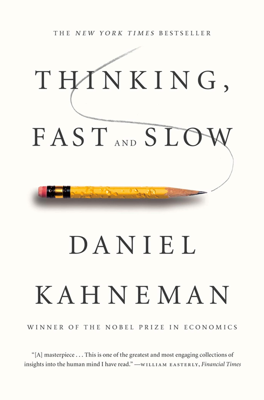Linda: Less is More
The Linda Problem: Representativeness vs. Probability
Experiment Setup and Findings - The chapter discusses an experiment centered on a character named Linda, designed to illustrate the conflict between heuristic judgment and logical reasoning. Participants were given a description of Linda as bright, single, and politically active, then asked to rank several potential scenarios about her career and activities. Two critical scenarios involve Linda being a bank teller and a feminist bank teller. - The logical aspect of probability dictates that the likelihood of Linda being a feminist bank teller (a more specific condition) should be less than her simply being a bank teller. However, most participants ranked "feminist bank teller" as more likely than "bank teller" due to its coherence with Linda's described personality, demonstrating the dominance of the representativeness heuristic over logical probability.
Conjunction Fallacy - Kahneman and Tversky named this cognitive error the "conjunction fallacy," where people incorrectly judge the conjunction of two events to be more probable than one of the events alone. This fallacy persists despite education in probability among the participants, including doctoral students in decision-science programs.
Efforts to Highlight and Resolve the Fallacy - Even when simplified to directly ask which scenario (bank teller vs. feminist and bank teller) is more probable, a significant majority still chose the less probable but more representative scenario. This was true even among statistically educated individuals. - Attempts to reduce the fallacy involved different phrasing of questions and experimental conditions, identifying situations that could decrease the error, such as changing the focus from percentage to frequency format in questioning. This suggests that contextual cues can significantly alter responses.
Implications for Decision Making - The Linda problem demonstrates how plausibility and detail can mislead judgments, making more detailed and plausible narratives seem more likely, even when they are statistically less probable. - This issue is critically relevant in forecasting and scenario planning, where adding implausible details can unjustifiably increase the perceived likelihood of events. This effect, known by economists like Christopher Hsee as “less is more,” showed that sometimes, adding details (as in the case of a set of dinnerware) can decrease perceived value or probability.
Reflecting on Scholarly and Public Response - The Linda problem stimulated significant academic debate and public interest but also criticism that focused largely on questioning the participants’ understanding of probability as synonymous with plausibility. Critics argued that if participants viewed probability in these terms, then their responses might be considered reasonable. - Kahneman reflects on the nature of academic controversy, noting a tendency among scholars to focus on specific weaknesses in experimental designs or interpretations rather than on the broader implications of research findings.
Conclusion
- The chapter emphasizes the powerful influence of heuristics like representativeness in human judgment, which can overshadow logical rules even among trained and knowledgeable individuals. This underscores the challenge in expecting rational behavior in complex decision-making contexts where intuitive impressions often guide judgments.
